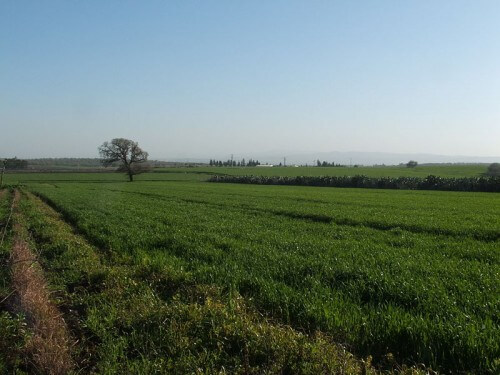By comprehensively collecting global crop data, comparing the use of fertilizers versus the yield, the authors show that by improving fertilization management and increasing the use of irrigation, it is possible to achieve a yield increase of 45 to 70 percent in most crops

In the previous list I brought the opinion of researchers who think that one should switch to vegetarianism because of the high caloric cost of meat production.
Other agricultural crops also consume many resources, the most important and main of which is water. Assuming that in 2050 the world population will be 9 billion inhabitants, it is necessary to improve food production capacity.
According to an article Published in Nature One of the main ways will be improving and streamlining irrigation systems and methods.
According to the analysis, the methods to optimize the use of water already exist. These methods will enable the reduction of the "yield gap", that is, the reduction of the difference between the possible yield of food crops and the current yield of food.
By comprehensively collecting global crop data, comparing the use of fertilizers versus the yield, the authors show that by improving fertilization management and increasing the use of irrigation, it is possible to achieve a yield increase of 45 to 70 percent in most crops.
The authors note that "our research shows that with proper intervention, diagnosis and prioritization of efforts, it is possible to close the "yield gap" on a regional and global scale." They cite Eastern Europe as an example, where there is "lack of execution", according to them: "Knowing which region or crop needs additional fertilizer would be very useful."
To emphasize the "yield gap" trend, the authors used a statistical approach, by combining national and regional data on crops versus fertilizer use. The authors divided the world into regions where there are similar types of crops (due to a similar climate) and then calculated the yield that can be obtained and the factors that contribute to the "yield gap", the calculation was made for 17 types of important food crops, including wheat, rice and corn. In this way it was possible to build models that refer only to the yield in relation to the investment (in fertilizers). In this way, it is possible to calculate the investment required to close the "yield gap", as well as identifying areas where the investment can be reduced and continue to receive the same yield. For example: in China it is possible to reduce the use of fertilizer while preserving the amount of crops. A reduction in fertilization will reduce the emission of nitrogen oxide (a pollutant and greenhouse gas).
The researchers say that "our research shows that it is possible to increase food production and at the same time improve the quality of the environment only through smart behavior".
There are those who disagree with the writers. Agronomists (agricultural researchers) claim that: "The refreshing look at the "yield gap" on a global scale has flaws." The study ignores the need to develop crops that will guarantee a high yield, and makes the wrong assumption that the amount of fertilizers given in areas where there is a high yield will need to be given in every area where those crops are grown.
The authors produced a great enterprise in their assessment of the need for fertilizers for so many (different) crops, but the use of statistical data from the past as a basis for forecasting the future is a danger, since such use misses important information and processes." For example, the study does not address the importance of soil types, a fact that varies from region to region and affects crops. "Any agronomist will be surprised to see that the soil types were not included in the study."
That is why there are those who are preparing a "global atlas of the yield gap" by using the visualization of agronomic data and water use.
The authors of the study agree that the model they created lacks reference to soils "we are not saying that soils are not important but that it is difficult to locate a single soil factor that will affect the global yield".
It is clear that soil data is needed to complete the research and bring it to a practical and useful level on a global scale.
There are skeptics who criticize the proposal in the study to increase the use of irrigation on the grounds that it is possible that irrigation will indeed cause the closing of the "yield gap", but it will be an unsustainable activity (waste of water). Traditionally, the methods for closing the gap are improving irrigation (or praying for rain).
Collecting rainwater for use in an irrigation system is not an easy task because of the investment involved, and if we remember again that 70% of the available water flows to agriculture, the question arises, do we have sufficient amounts of water at our disposal to irrigate more crops?
The authors of the study intend to deal with the issue of water for irrigating crops in the face of the global shortage. According to them, "we must find ways to remove the pressure from areas sensitive to lack of water, perhaps by increasing agricultural crops in other areas".
And I will add (as usual) that the time has come that instead of controlling the environment for the sake of the human population, there will be control of the human population for the sake of the environment!

One response
We have to change our thinking and think about how to engineer plants and crops so that they grow or can be irrigated with seawater